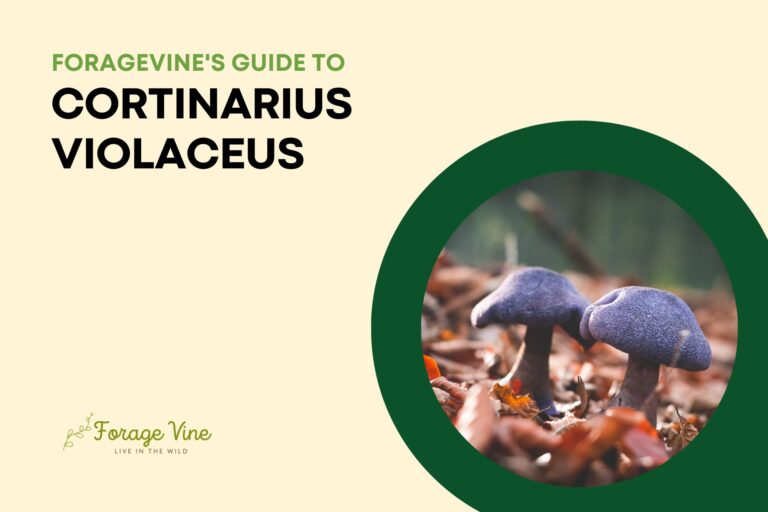Blue Oyster Mushroom: How to Identify and grow it and Whether is Edible?
Are you curious to know more about the blue oyster mushroom? What it looks like, whether or not it’s edible, and how to grow it? Then this guide is for you! This Ultimate Guide To Blue Oyster Mushroom sheds light on blue oyster mushrooms and explores their different uses. Learn how to identify them, if they’re edible, and most importantly, how to cultivate your blue oysters at home to be ready in just a few weeks. So delve into the world of blue oysters with us as we unearth their many uses.
Introducing the Blue Oyster Mushroom
The blue oyster mushroom is a delicacy that can be enjoyed in many forms. This fungus boasts a unique and fascinating shade of blue/gray color – it’s also highly nutritious and easy to grow right in your kitchen. This fantastic mushroom will surely please you whether you like it raw, cooked, or dried. But don’t limit yourself to just enjoying the delicious taste! Keep reading to learn more about identifying and growing these luscious mushrooms at home – the ultimate guide to the blue oyster awaits!
How to Identify Blue Oyster Mushroom
Identifying a blue oyster mushroom can be tricky, so knowing the basics of recognizing one is essential. Firstly, look for a wavy lobed cap shape, usually thick and fan-shaped. Additionally, their color usually ranges from light-grayish to blue-gray tones, and their skin texture tends to be slippery when wet. Regarding consistency, the oyster mushroom has soft flesh, although it is pretty tough when dried out and leathery in feel. To finish the identification process, look for signs of a veiny pattern on its flesh and yellowish gills underneath the cap that can appear either light or dark depending on the mushroom’s age and environmental elements.
Is Blue Oyster Mushroom Edible
Blue Oyster Mushroom (Pleurotus ostreatus) is one of the most popular, economic, and widely distributed mushrooms worldwide. As its name implies, it has a blue hue when bruised or dried. This delicate mushroom can liven up any dish when cooked, as well as contribute flavor nuances that are worth learning about. Fortunately for us foodies, this tasty fungus is flavorful and edible too! But, before adding it to your dish, ensure you have identified it correctly. That comes with practice – identification is an essential safety step before consuming wild-harvested mushrooms. So check out our ultimate guide on identifying and growing Blue Oyster Mushroom!
How to Grow Blue Oyster Mushrooms at Home
Growing blue oyster mushrooms at home might be perfect if you’re looking for an exciting and rewarding experience! The edible mushroom produces stunningly beautiful fan-shaped caps with intense blue veils that can add to the aesthetic of your indoor garden. Furthermore, once established, blue oyster mushrooms grow year-round harvest cycles that can bring a steady income to your pockets. The best part is that this type of mushroom is easy to cultivate—all you need are high-quality spawn and a well-prepared substrate. We have put together this ultimate guide to provide all the information required to grow these fantastic mushrooms from the comfort of your home.
The Benefits of Eating Blue Oyster Mushroom
Blue oyster mushrooms are an excellent addition to any diet. Not only are they a low-calorie, nutrient-rich food source, but they also offer some unique health benefits. For instance, studies show that regular consumption of these mushrooms can help lower cholesterol levels and reduce inflammation. Blue oyster mushrooms are also packed with antioxidants which help fight off cellular damage and keep you healthy. Additionally, these mushrooms have been found to increase immune system functionality, making them an essential staple in anyone’s diet looking for an overall boost in energy and health.
Tips and Tricks for Growing Blue Oyster Mushrooms Successfully
Growing blue oyster mushrooms successfully is not as complicated as you may think! By following a few easy tips and tricks, you can ensure that your yield is plentiful and of the highest quality. Remember to pick a healthy growing substrate like straw or sawdust, which you can usually find in gardening stores nearby. Ensure the environment is moist and warm, optimal for blue oyster growth. Sterilize the medium before inoculating it with mushroom spawn to prevent other fungi from being present. Finally, remember to provide enough air circulation for the mushrooms, so they get enough oxygen to survive and flourish! With just a few good practices, you can grow delicious blue oyster mushrooms right in your home!
Blue oyster mushroom is an incredible addition to anyone’s kitchen. They are straightforward to find and can be grown at home with minimal effort and cost. These mushrooms have a pleasing flavor and texture, but eating them provides health benefits like boosting your immune system and providing probiotics, among other things. As we now know from this ultimate guide on the blue oyster mushroom, they are a prized food source that can easily be enjoyed in various meals. With the tips and tricks discussed here, you can get on board with cultivating blue oyster mushrooms right in your kitchen!

